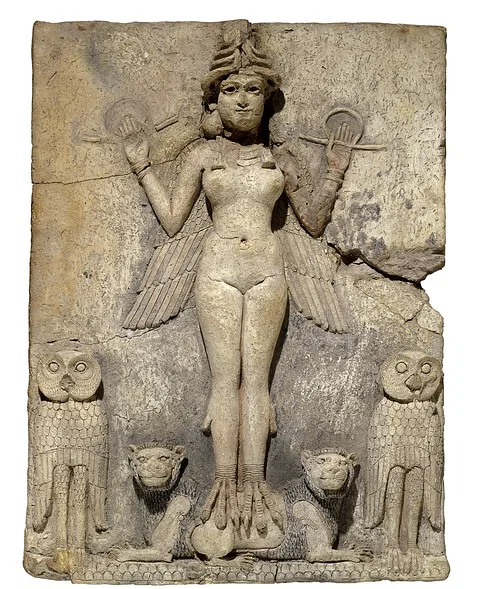
The Queen of the Night is a notable and intriguing ancient artifact from the Old Babylonian period, created around 1800-1750 BCE. It is a large plaque made of baked, straw-tempered clay and features a high-relief sculpture. Discovered in southern Iraq, it is believed to depict a powerful female deity, often identified as a goddess associated with the night.
The plaque itself stands out for its detailed, dramatic imagery. The central figure is a winged goddess or divine female figure, possibly representing a goddess of the night, a celestial or underworld being. She is shown with an elaborate headdress, a fierce expression, and her hands extended forward. She is framed by symbols of fertility and the divine, which were central to Babylonian religious beliefs.
Some scholars believe the figure could be associated with Ishtar, the Babylonian goddess of love, beauty, and war, or Ereshkigal, the goddess of the underworld. The high-relief style of the plaque enhances the sense of movement and depth, capturing the goddess in a dynamic and imposing pose. The depiction of her wings and the dramatic posture suggests that the goddess was linked with both protection and the celestial sphere.
The plaque’s symbolic importance lies in its association with the religious and cultural practices of ancient Mesopotamia, where gods and goddesses played significant roles in understanding the cosmos, human life, and death. This artifact serves as a testament to the craftsmanship and artistic achievements of the period, as well as to the rich spiritual and mythological traditions that permeated the Babylonian civilization.
Its exact purpose is still debated, but it could have been a votive object, a representation of divine protection, or an emblem of the power and mystery associated with the night and its deities. The Queen of the Night remains one of the most captivating pieces from this period, providing valuable insight into the religious iconography and artistic skills of the time.